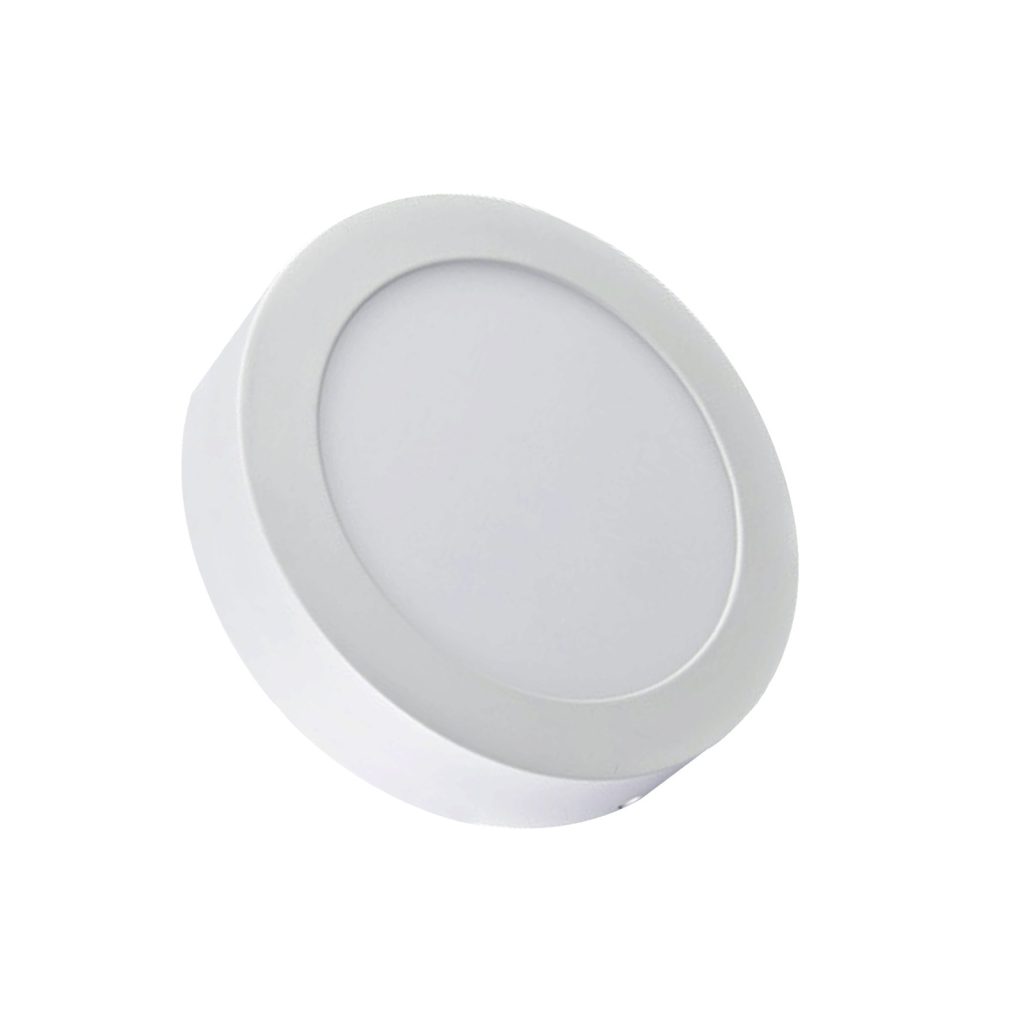The Complete Guide to LED Panel Light
Table of Contents
ToggleWhat is an LED Panel Light?
An LED panel light is a thin, flat lighting fixture that uses light-emitting diodes (LEDs), producing bright and uniform illumination across a wide surface.
Unlike traditional bulbs, which emit light from a small point, LED panel lights use edge-lit technology to distribute light evenly, minimizing shadows and dark spots as a result.
So it’s not surprising why offices, homes, and commercial spaces often choose this type of lighting, as it improves the overall look and functionality of the environment.
Moreover, it can be installed surface-mounted or recessed, making it adaptable for different uses.
LED Panel Light Types
The types of LED panel lights below are further categorized into three main categories: installation method, way of lighting, and functional choices.
Installation method:
Recessed Mount LED Panel Light
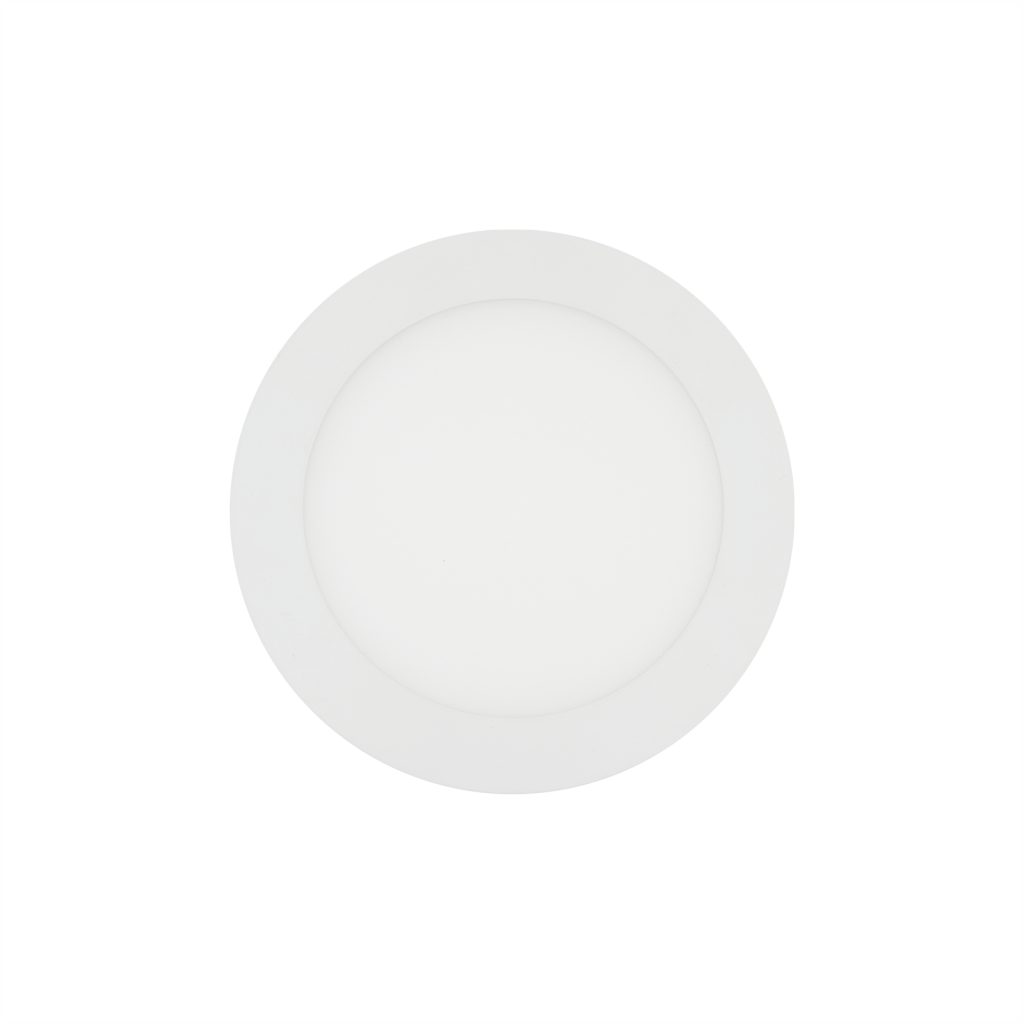
A recessed mount LED panel light is installed flush with the ceiling, giving a clean, minimalist look. They are commonly used in offices, showrooms, and places where a low-profile design is desired.
Surface Mounted LED Panel Light
A surface-mounted panel light sits directly on the ceiling or wall. These are excellent choices where recessed installation is not possible, such as limited ceiling space or structural constraints.
Suspension Mounted LED Panel Light
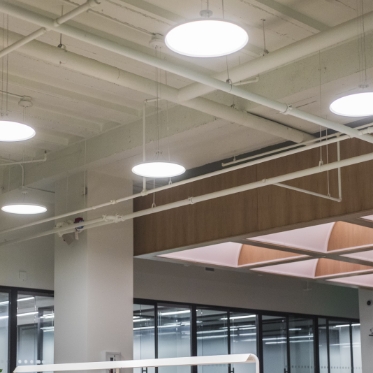
Suspension-mounted LED panel lights hang at a certain height below the ceiling using adjustable cables. This means light can be brought down to the desired level. You can often see this in high-ceiling spaces, such as galleries and warehouses.
Way of lighting:
LED Backlit Panel Light
Backlit panels have the LEDs located behind the panel. Thus, light is emitted forward and is evenly distributed across the panel.
In this design, the light tends to be more efficient as there is minimal loss of light due to reflection or refraction within the panel.
LED backlit panel lights also tend to have longer lifespans. The direct placement of LED chips behind the light guide plate means better heat dissipation, which helps maintain the panel’s longevity.
LED Edge Lit Panel Light
LED edge lit panel lights (also known as side-emitting panel lights) have their LED chips positioned along the edges of the panel, rather than directly behind it. This allows for a thinner and lighter design compared to the backlit version.
One drawback, however, is that the brightness may not be as uniform, especially toward the center of the panel, as the light has to travel further from the edges.
That said, it excels in applications where aesthetics are a priority. You can often see this type of LED panel light in modern homes and high-end offices.
Functional Choices:
LED Square Panel Light
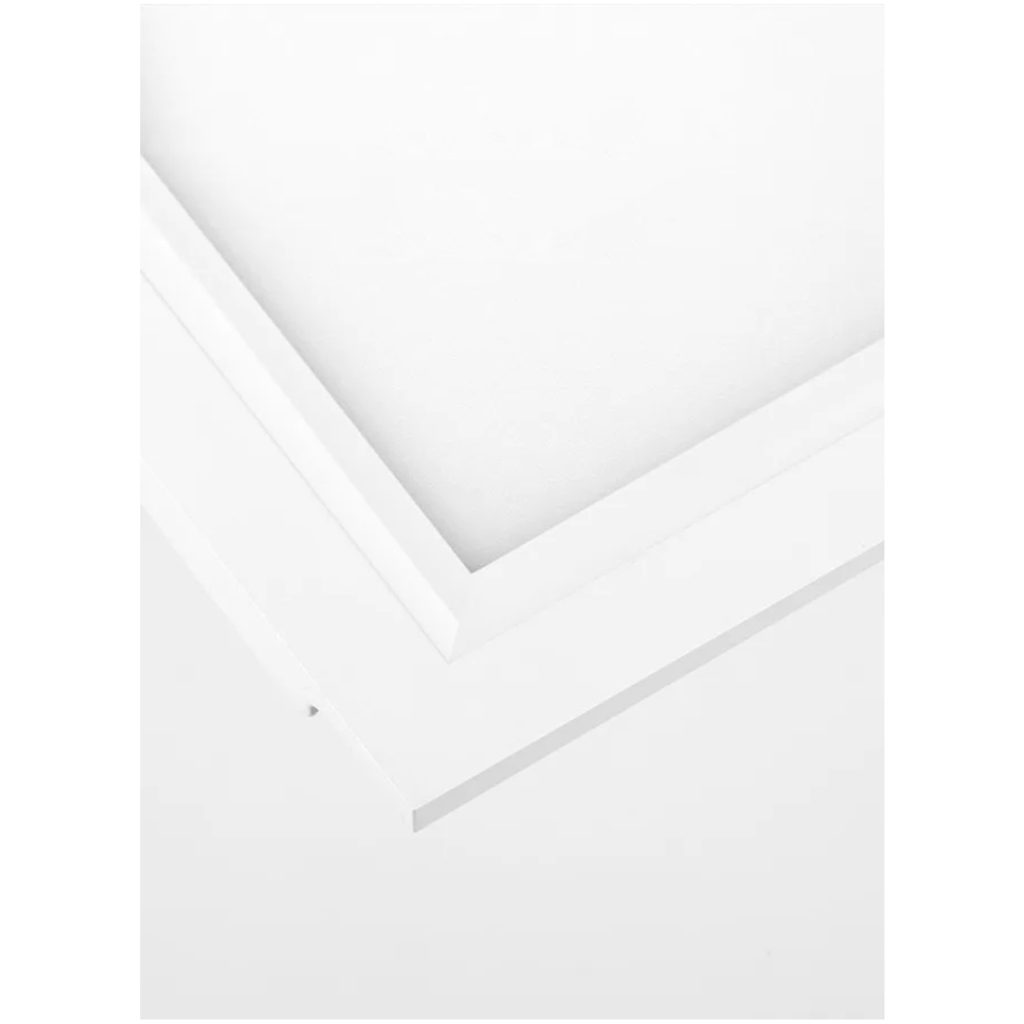
An LED square panel light is just like its rectangular counterpart but is designed to fit spaces where a square shape is more practical. They’re commonly used in smaller areas like hallways or compact rooms.
Dimmable LED Panel Light
Dimmable LED panels allow you to adjust the light intensity. This is ideal for settings like conference rooms or home offices where you may want to switch between bright and soft lighting, depending on the task.
Color-Selectable LED Panel Light
Color-selectable panels allow you to choose between different color temperatures. These are perfect for people who want flexibility to “change the mood” in their lighting set up, such as in multipurpose rooms or creative spaces.
RGB LED Panel Lights
These panels can change color to almost any hue, making them a favorite in creative spaces or for decorative lighting. You might see these in retail environments, bars, or even at home for fun lighting effects.
Waterproof LED Panel Light
Waterproof LED panels are designed for use in environments where exposure to moisture is a concern. They are often used as commercial lighting in kitchens, bathrooms, and even outdoor areas.
Emergency Backup LED Panel Light
These lights come with a built-in battery, providing light during power outages. You’ll see this often in stairwells and hallways of manufacturing plants, hospitals, educational institutions and any other location where safety is a top concern.
Practical Applications of LED Panel Lights
LED panel lights are all around us, but they’re easy to miss because they blend so well into the surroundings. Below are settings where these lights quietly make life easier and improve productivity.
Healthcare Facilities

Daylight LED panels with high lumen ratings and color rendering index (CRI) are often used in operating rooms or laboratories. These panels ensure that colors and details are accurately represented, which is critical for medical tasks.
Moreover, LED panel lights equipped with emergency battery backup are placed strategically in key areas of health facilities. This way, patient care and medical procedures can proceed smoothly during power outages.
Retail
Standard flat LED panels or backlit LED panels often serve as retail lighting. They provide even, balanced illumination to showcase products and elevate the overall shopping experience.
For larger retail spaces with high ceilings (e.g. department stores, groceries), you may encounter 2×2 ft recessed LED panel lights. You may even see smaller, square LED panels (around 1×1 ft) used for accent lighting on product displays or checkout counters.
Industrial Settings
Warehouses, manufacturing plants, and distribution centers all require high-lumen lighting to keep the entire space well-lit. Here, large, surface-mounted or backlit LED panels (4×4 ft or 4×2 ft) are ideal.
Suspension-mounted LED panel lights are also used oftentimes, which allows for bringing the light source closer to the floor. This improves the lighting conditions and reduces shadows in loading zones, aisles, and other key areas.
Offices
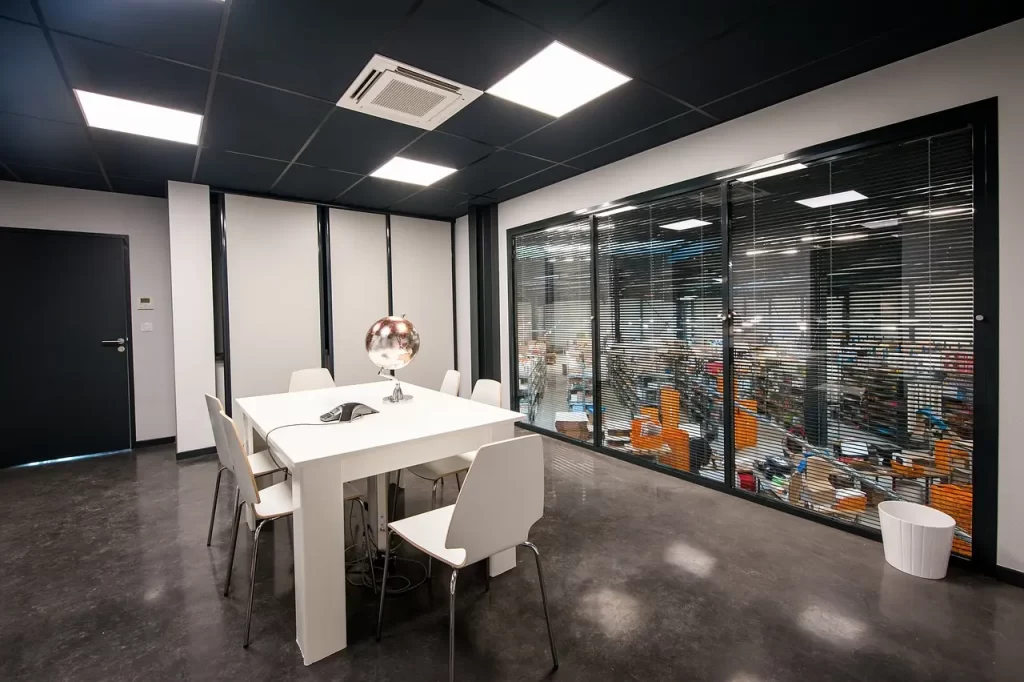
In large, open-plan corporate offices and co-working spaces, recessed mount LED panel lights (typically 4×2 ft) provide bright, glare-free lighting. This reduces eye strain and fatigue, promoting productivity.
Dimmable panels are also used often as office lighting, especially in conference rooms or meeting areas. This is particularly helpful during video presentations and collaborative activities where different lighting levels are necessary.
Restaurants
LED panel lights improve the ambience in upscale dining areas and bars. For example, dimmable LED panels create a soft atmosphere, while suspended LED panels add a modern style.
On the back end, large LED panels provide bright and uniform lighting for chefs and staff to properly and safely prepare food in the kitchen.
Homes
LED panel lights for homes and residential properties enhance the aesthetics of areas like kitchens and living rooms. There are also standard LED panel lights for garage use, as well as dimmable ones that provide ambient lighting in bedrooms.
Buying Tip: How to Choose the Right LED Panel Light
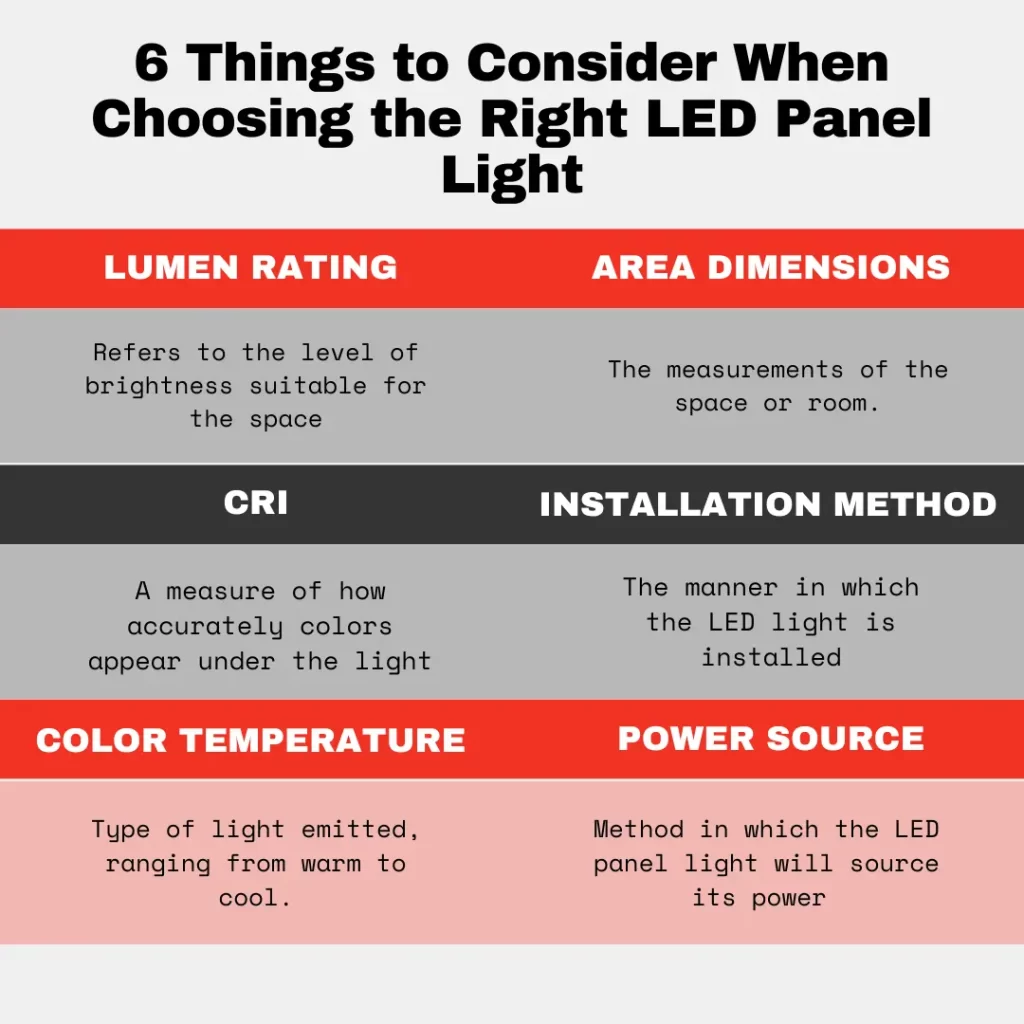
Before you rush to call an LED panel light supplier and make a purchase, it’s important to consider a few factors first. Doing so can help you avoid costly mistakes and save you time.
Desired Brightness (Lumen Rating)
Brightness is measured in lumens, and the right level of brightness depends on the room’s function. A bedroom or living room may require softer, warmer lighting, while an office or kitchen might benefit from higher brightness.
You’ll typically want 20-50 lumens per sq. ft., depending on the space’s usage (more on this later).
For example, an LED panel offering 3,000 lumens would suit a medium-sized living room, while an office might require over 4,000 lumens for optimal working conditions.
Space or Area Dimensions
How large is the area where you’ll install the LED panel light/s? The measurement of your room is a key factor that will dictate how much lighting you’ll need, as well as the size and number of panels necessary.
How do you calculate the right size of an LED light panel?
- Get the square footage of the area.
Say, you have a rectangular room that’s 13 feet long and 10 feet wide. Multiplying the two gives you an area of 130 square feet.
- Calculate the lumens required for your space.
You must first check the recommended lumens per area (or lux) for a particular use case. For general lighting, around 300 lumens per sq. m. (approximately 28 lumens per sq. ft.) is a good baseline.
So, if your room is 130 sq. ft. and you need 28 lux, you would need a total output of around 3,600 lumens (130 sq. meters x 28 lux ≈ 3,600 lumens).
This Lux to Lumens Calculator can help you arrive at the numbers, including a guide on the recommended lux for a space.
- Choose an LED panel light that offers a lumen output close to this total.
To do so, you must obtain your supplier’s specifications or product details (usually uploaded online) and check the lumen output capacity for the specific panel size you’re considering.
In many cases, a 2×2 ft. square LED panel light can provide up to 4,200 lumens. So, it very well suffices the 3,600-lumen requirement.
Now, what if you are working with a bigger area that needs more light? Surely, one LED panel light won’t suffice – you will need multiple LED panels to achieve the right level of brightness.
This is how to calculate the number of LED panel lights:
- Determine the total lumens required for the space.
For example, a room that’s 20 ft. by 15 ft. has a square footage of 300 sq. ft. (20 x 15 = 300).
Say you need 28 lux for this space (refer to this Lumens Calculator to know the recommended lux). Multiplying 300 by 28 gives you 8,400 lumens required to properly light the space.
- Check the lumen output of your LED panel light.
Let’s say each LED panel light you’re considering provides 4,200 lumens (this is typical for a 2×2 foot panel).
- Divide the total lumens by the lumen output of each panel.
Take your total lumens (8,400 lumens) and divide it by the lumens per panel (4,200 lumens). In this case, you’d need two LED panels to fully light the room (8,400 ÷ 4,200 = 2).
Color Temperatures
Color temperature, measured in Kelvin (K), describes the type of light emitted by a source, ranging from warm to cool.
You should go back to the purpose or usage of the room to know what color temperature your LED panel light should emit.
As a simple guide:
| Offices (5000K-6500K) | Known as cool white light, it has a bluish tint that supports alertness and concentration, making it ideal for work settings [3]. |
| Bedrooms and living rooms (2700K-3000K) | Known as warm white light, it is a soft, yellowish glow that promotes comfort and relaxation. |
| Kitchens and retail spaces (4000K-43000K) | Known as neutral white light, it provides a balanced illumination (not too warm, not too cool) that’s suitable where accurate color representation is important. |
Color Rendering Index (CRI)
The Color Rendering Index (CRI) indicates how accurately colors appear under the light compared to natural daylight. As a general guide:
| CRI 90 | Excellent |
| CRI 80 | Good |
| CRI 50-70 | Fair |
A CRI of 90 or higher is recommended for environments where color accuracy is critical, such as retail stores or art galleries. For general use, such as offices, a CRI between 80 and 90 is typically sufficient.
Your supplier’s specifications will likely have this information included.
Installation Methods
Obviously, it’s impossible to install a recessed mounted LED panel light where there are no holes in the ceiling. Check your ceiling first to see if the type of LED panel light is suited for your space. Below is a quick summary of the best use cases for each type:
- Recessed Mount: Perfect for spaces with drop ceilings as it offers a clean, flush finish.
- Surface Mount: Best for spaces with solid ceilings (e.g. concrete slab soffit).
- Suspension Mount: Great for rooms with high ceilings and where aesthetics is prioritized (the suspended panel offers even lighting with a modern, floating appearance).
Power Source
LED panel lights generally come with two main power sources: direct-wired or plug-in.
Direct-wired panels connect directly to the building’s electrical system and are often used for permanent installations.
Plug-in LED panel lights are more flexible and easier to install. These are suitable for spaces that need temporary setups or when you want to avoid permanent electrical work.
Consider which power option is most convenient and practical for your space, especially if you’re planning a permanent or temporary installation.
What are the components of LED Panel Lights?
The components of LED panel lights are as follows:
Frame
The frame provides the structural support to keep the light in place. It is typically made from aluminum and keeps the inner components safe from dust and damage.
Diffuser
The diffuser is a sheet placed at the front of the panel, right under the frame. It functions to scatter the light evenly, so you don’t get harsh, direct lighting. It softens the output, creating a smooth, uniform glow across the room.
LED Chipset
The LED chipset is where the tiny light-emitting diodes (LEDs) are grouped together to produce bright light.
Light Guide Plate
The light guide plate is positioned behind the diffuser. It guides the light generated by the LEDs towards the diffuser, allowing for even distribution across the entire panel surface.
Reflective Layer
The reflective layer sits behind the light guide plate and offers help in directing light forward. By reflecting any light that bounces backward, it maximizes the efficiency of the panel, ensuring that as much light as possible is directed into the room.
Heat Sink
Heat sinks are located behind the LED chipset. Their purpose is to draw heat away from the LEDs, preventing them from overheating. Since LEDs are sensitive to high temperatures, the heat sink helps significantly in extending the lifespan of the light.
LED Driver
The LED driver controls the electrical power going into the LED panel. As a result, the LEDs function at the correct brightness and efficiency levels.
Moreover, it converts the AC power from your electrical outlet into the DC power that LEDs need to operate. Without it, the LEDs would burn out quickly.
Backplate
The backplate is the layer at the rear of the panel, typically made of aluminum. Its job is to support the other components and keep everything secure. It can also help with heat dissipation.
Control System
Some LED panels come with a control system, such as dimmers or smart controls, that allows lighting customization. You can adjust the brightness and color temperature, or even automate when the lights turn on and off.
Frequently Asked Questions (FAQs) About LED Panel Lights
Which are the best LED panel lights?
The best LED panel lights depend on your specific needs or requirements, but in general, look for those with high lumen output, energy efficiency, and a reliable manufacturer. Moreover, ensure the panel you choose has a safety seal or certification.
Can I install LED flat panel lights myself or do I need professional help?
You can definitely install LED flat panel lights yourself, following our general guidelines earlier. However, if your installation involves altering wiring, cutting into ceilings, or dealing with suspended installations, we recommend calling a professional as these tasks come with more safety risks.
Are there any health concerns related to LED panel lighting?
Some studies suggest that LED panel lighting may pose health concerns, particularly regarding blue light exposure and flickering. However, these issues can be minimized with just a few easy adjustments in habits or behavior.
For example, blue light exposure, especially in the evening, may interfere with sleep patterns [4]. To avoid this, opt for warmer color temperatures (below 3000K) in areas like bedrooms, as they promote relaxation and better sleep.
Flickering, which is often caused by poor manufacturing or low-quality components, can lead to eye strain or headaches. You can prevent this by choosing LED panels with high-quality drivers that reduce flicker.
Overall, LED panel lighting is generally safe. It doesn’t emit harmful UV rays, contains no toxic mercury, and stays cool to the touch, so there’s little reason for concern.
What are the wattages and dimensions of LED panel lights?
The most common wattages range from 6W to 60W, which can cover a variety of brightness levels and room sizes. For dimensions, 2×2 ft. and 1×4 ft. are popular for drop ceilings or larger areas, while 1×1 ft. panels are more compact and suited for smaller spaces.
Suppliers will usually provide you with more specific details on their available LED panel sizes with the corresponding wattages.
What are the common quality issues in LED panel lights?
Some common quality issues in LED panel lights include flickering, uneven light distribution, and color inconsistency.
To avoid these problems, choose panels from reputable manufacturers and check for certification marks like Energy Star or UL, which indicate adherence to safety and performance standards.
Get the Highest Quality LED Panel Lights for Your Business
TOSUNlux provides a one-stop solution for a range of reliable and high-performing lighting products, catering to businesses looking for LED panel light wholesale. We are:
- Trusted in 93 countries
- Certified with ISO 9001, CCC, Intertek, and more
- Large-scale LED Panel Light installation providers
Tel: +86-577-88671000
E-mail: ceo@tosun.com
Skype: tosunelectric
Wechat: +86-139 6881 9286
WhatsApp: +86-139 0587 7291
Address: Room No.1001 Wenzhou Fortune Center,Station Road, Wenzhou, China
REQUEST A QUOTE
WhatsApp us
 : +86-139 0587 7291
: +86-139 0587 7291 English
English Español
Español Русский
Русский Français
Français العربية
العربية Português do Brasil
Português do Brasil Українська
Українська Türkçe
Türkçe Polski
Polski Nederlands
Nederlands Italiano
Italiano Bahasa Indonesia
Bahasa Indonesia हिन्दी
हिन्दी اردو
اردو አማርኛ
አማርኛ Հայերեն
Հայերեն ไทย
ไทย Монгол
Монгол فارسی
فارسی Shqip
Shqip Ελληνικά
Ελληνικά
